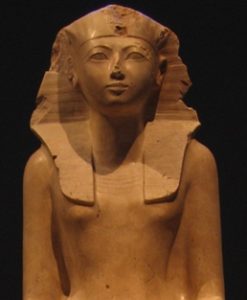Published in the March 16- 29, 2016 issue of Morgan Hill Life
By Vee Zabala’s sixth-grade class at San Martin/Gwinn Environmental Science Academy
March is Women in History Month and our class has recently studied ancient Egyptian history where we learned about Hatshepsut, the first female pharaoh. As a leader who began her reign in 1472 B.C., she accomplished many goals. She serves as an outstanding role model for women leaders today.
Hatshepsut married her half brother Thutmose II when she was 12 years old. After he died, she became the pharaoh because her nephew Thutmose III was next in line but too young to be ruler. One of her most important accomplishments as a leader was to increase the trade between Egypt and other nations. One way she did this was by sending five ships that were each 80-feet long to the nation of Punt. When they arrived there, the tribal leader welcomed them and they traded bronze daggers, bronze axes, necklaces, wheat bread, dried fruit and honeycakes for gold, logs, ivory, baboons, monkeys, leopards, incense and 31 myrrh trees.
Hatshepsut showed leadership skills by developing relationships with other countries through trade. As a leader, she showed many qualities of character. She was responsible, trustworthy, fair, honest, smart, clever and talented with social skills. Modern day women leaders can learn from her because she showed confidence and was inspirational to her people.
Today, we have many women leaders. One is Michelle Obama who is considered a role model on a national level and even as a world leader for promoting healthy foods in public schools. Here at San Martin/Gwinn, we have a new fresh salad bar thanks to Mrs. Obama’s work that will bring nutritious fruits and vegetables to our school.
Even though many people have not noticed it, women leaders have been around for thousand of years — with Hatshepsut as one example from ancient Egypt.
After a Junior Journalism workshop by Morgan Hill Life Publisher Marty Cheek, San Martin/Gwinn Environmental Science Academy sixth graders in Vee Zabala’s class wrote this column.







